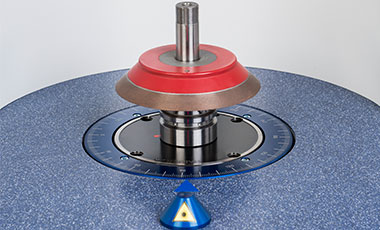Grinding Wheel Balancing: The Importance of Maintaining Balance in Grinding Operations
Grinding wheel balancing is a crucial aspect of grinding operations, as it ensures the smooth running of grinding machines and extends the life of the grinding wheel itself.
Imbalance wheel balancing can lead to a number of problems, including excessive vibrations, wheel wear, and operator fatigue.
Here, We’ll explore the importance of grinding wheel balancing and the techniques used to achieve it.
Table of Contents
The Purpose of Grinding Wheel Balancing
Grinding wheel balancing is all about ensuring that the wheel is evenly distributed around its axis. This is important for two key reasons:
- To reduce vibrations
- To extend the life of the wheel
When a wheel is out of balance, it produces excessive vibrations that can cause significant wear and tear to the grinding machine and its components.
This, in turn, can lead to increased downtime and maintenance costs. Balancing the wheel also helps to extend its life, as it reduces the stress on the wheel and prevents it from wearing out too quickly.
The Techniques Used for Grinding Wheel Balancing
There are several techniques used for grinding wheel balancing, including manual balancing, static balancing, and dynamic balancing. Each of these techniques is suited to different applications, depending on the size and type of the wheel and the demands of the grinding operation.

Manual Balancing
Manual balancing is the simplest form of wheel balancing and is used for small, lightweight grinding wheels.
This method involves attaching weights to the wheel to balance it by hand. The process is quick and easy, but it is not suitable for larger, heavier wheels.
Static Balancing
Static balancing is used for larger, heavier grinding wheels and involves the use of a balancing machine. The Grinding wheel is mounted on the machine and spins at a low speed while weights are attached to the wheel to balance it.
This technique is highly accurate and is used for many applications, including aerospace, motorsport, and high-precision manufacturing.
Dynamic Balancing
Dynamic balancing is used for high-speed grinding operations, such as those found in the aerospace industry. This method involves the use of a balancing machine that spins the wheel at high speeds, allowing for more accurate balancing.
This technique is the most precise of all the wheel balancing methods and is used for high-precision grinding operations where even the smallest imbalance can cause problems.
The Benefits of Grinding Wheel Balancing
Grinding wheel balancing provides several key benefits, including:
- Reduced vibrations and noise levels
- Extended wheel life
- Improved machine performance and efficiency
- Reduced downtime and maintenance costs
In addition, properly balanced grinding wheels help to produce consistent and high-quality parts, which can be important in many industries.
With the various techniques available, from manual balancing to dynamic balancing, it is possible to achieve accurate and precise balancing, regardless of the size and type of the wheel and the demands of the grinding operation.
Maximizing Efficiency: A Step-by-Step Guide to Correctly Balancing Your Grinding Wheels
Balancing a new grinding wheel pack is crucial for ensuring smooth and efficient operation in your grinding process. Here is a step-by-step guideline for the initial balancing of a new grinding wheel pack:
- Prepare the equipment: Make sure you have the correct balancing machine and tools for your wheel size and type. Also, prepare the weights and other materials you will need for the balancing process.
- Mount the wheel pack: Mount the wheel pack on the balancing machine, following the manufacturer’s instructions for your specific machine and wheel type.
- Spin the wheel pack: Start the machine and spin the wheel pack at a low speed.
- Check for imbalances: Observe the wheel pack as it spins, checking for any imbalances or vibrations. If you see any imbalances, note their location and direction.
- Add weights: If the wheel pack is out of balance, add weights to the wheel in the opposite direction of the imbalance. Start with small weights and add more if necessary.
- Repeat the process: Repeat the process of spinning the wheel pack and checking for imbalances until the wheel pack is properly balanced.
- Check the balance: Once the wheel pack is balanced, run the machine for several minutes to ensure the balance remains stable.
- Mark the wheel pack: Mark the wheel pack with the weights and their locations to ensure that it is always assembled in the same balanced configuration.
By following these steps, you can ensure that your new grinding wheel pack is properly balanced and ready for use. This will help to minimize vibrations and prolong the life of the wheel pack, resulting in a more efficient and effective grinding process.

